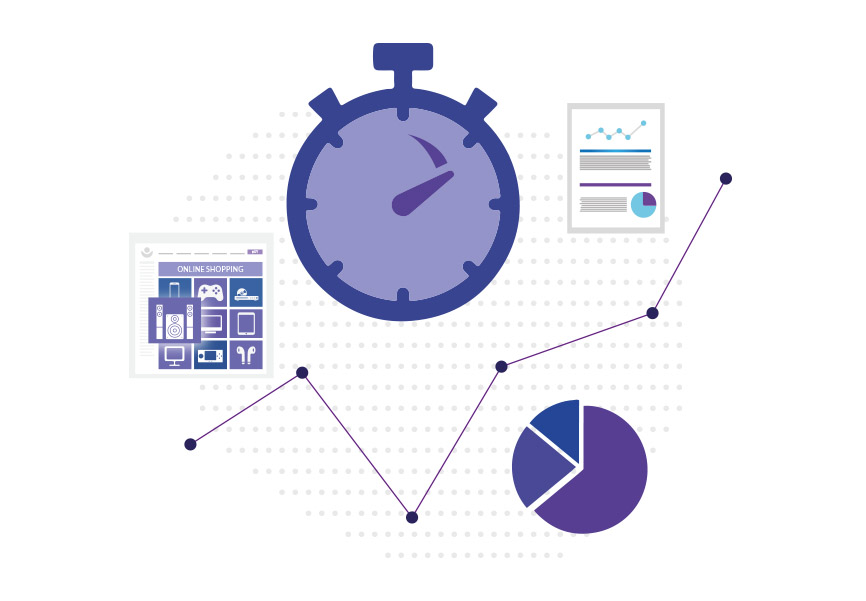Recommendation algorithms in the eCommerce service
- 07 August 2020

The post was written in cooperation with Edrone.
Algorithms can be very different from each other – everyone who deals with the promotion and implementation of solutions based on “artificial intelligence” knows it.
They also differ in the way people think about them, depending on which term you hear – Machine Learning or Artificial Intelligence. These concepts are not synonymous, but they have something in common – the use of advanced, self-learning algorithms.
We will focus on AI algorithms that are directly applicable in the everyday work of an eCommerce manager to make it easier.
From the text you will learn:
- what artificial intelligence is – as a valuable tool in eCommerce and not a buzzword straight from Sci-Fi movies,
- why algorithms can be used in virtually all fields of working with data (in the form of numbers or other),
- the examples in which we use algorithms without always being aware of it.
What is and what is not SI / AI?
Artificial intelligence by definition is a branch of computer science that deals with the design of models, algorithms that simulate human intelligence. So what is intelligence? It is (since the oldest version in the 1950s!) the ability of the system to correctly interpret external data, learn from it, and use this knowledge to perform specific tasks and achieve goals through flexible adaptation ”(Andreas Kaplan and Michael Haenlein).
It is slightly different from the description of “intelligence” itself. For the sake of simplicity, I will list the most important components:
- Gathering information – the ability to absorb information from the environment,
- Memory – the ability to store it after being “processed”,
- Learning – structuring stored information into sequences of “thoughts” and actions to be performed,
- Knowledge – structuring the information base so that it can be passed onto the next generation,
- Creativity – the ability to create new and adequate solutions to solve a given problem,
- Planning – the ability to delay certain actions to achieve better results.
And:
- Collaboration – the ability to see “itself” as parts of similar objects to achieve even better results, unattainable by acting alone.
Artificial intelligence that you encounter every day is a specialized program that performs the given activity better and better, adapting to reality efficiently, or has been previously taught – or actually – trained. Its knowledge hasn’t been “inserted” in the form of strict rules, but an algorithm which, taking into account the probabilistic nature of reality, can adapt better and better to the entrusted task. This gives the impression that the program has drawn logical, intelligent conclusions, but it is an illusion.
What does Artificial Intelligence need?
Data. A large and necessarily structured amount. Based on the input data, AI makes a choice – a verdict that, based on the data, is the probability distribution of the “certainty” of each of the possible verdicts. It’s just a calculator, incredibly complex but capable of converting a number to a number.
If making any choice involves the evaluation of numerical data and you can verify the verdict, preferably as yes /no, then most likely the process considered can be automated by AI (and your competition is likely to already be doing it).
Recommendation – the simplest, most effective, irreplaceable algorithm
The recommendation algorithm, despite its simplicity, is an extremely useful tool in eCommerce for proposing new, often complementary products to customers, and thus increasing sales conversion.
It is difficult to say exactly how it works because each recommendation algorithm is adapted to the needs of what it should recommend, while the principle of operation is more or less the same.
We have a set of items: A, B, C, D, E.
Customer-1 buys items A, B, and C.
Customer-2 buys item set C, D, E.
Customer-3 buys items A, C, so the algorithm will suggest item B.
Customer-4 buys item C, so the algorithm will propose the set A + B or D + E.
Recommendation B will work with a high degree of probability for products selected by Customer-3 – other customers bought such a set for B may be the perfect complement to A and C.
By analyzing the raw data in large quantities, you can conclude this even if you don’t know what the products are, just by knowing their IDs. A “calculator/algorithm”, even knowing the name of the product, is not able to recommend a shoe care fluid – it does not understand the relationship between product A and B until it turns out that 97% of customers who buy A will buy B at a slight suggestion.
It is worth emphasizing once again the supporting role of intelligence in this type of solution. The relationship created between A and B is two-way in nature, which means that we recommend B for A, but also B, we will recommend A.
While there may be times when a customer buying a shoe care fluid is tempted to buy a pair of shoes they like, in the case of a laptop and laptop bag, for example, the “intelligence” of the system may fail. Even so, without having all the information, it may turn out that such a recommendation makes sense. For example, a customer was buying a bag not for themselves, or for a very old laptop. Advertising of the new one will give him an idea to modernize his equipment.
Based on very simple algorithms, it is difficult to take such factors into account. Because what type of data would you base your request on in such a case?
The algorithms dealing with more complex problems exist but interestingly, even their creators are often unable to determine why they made one and not another decision.